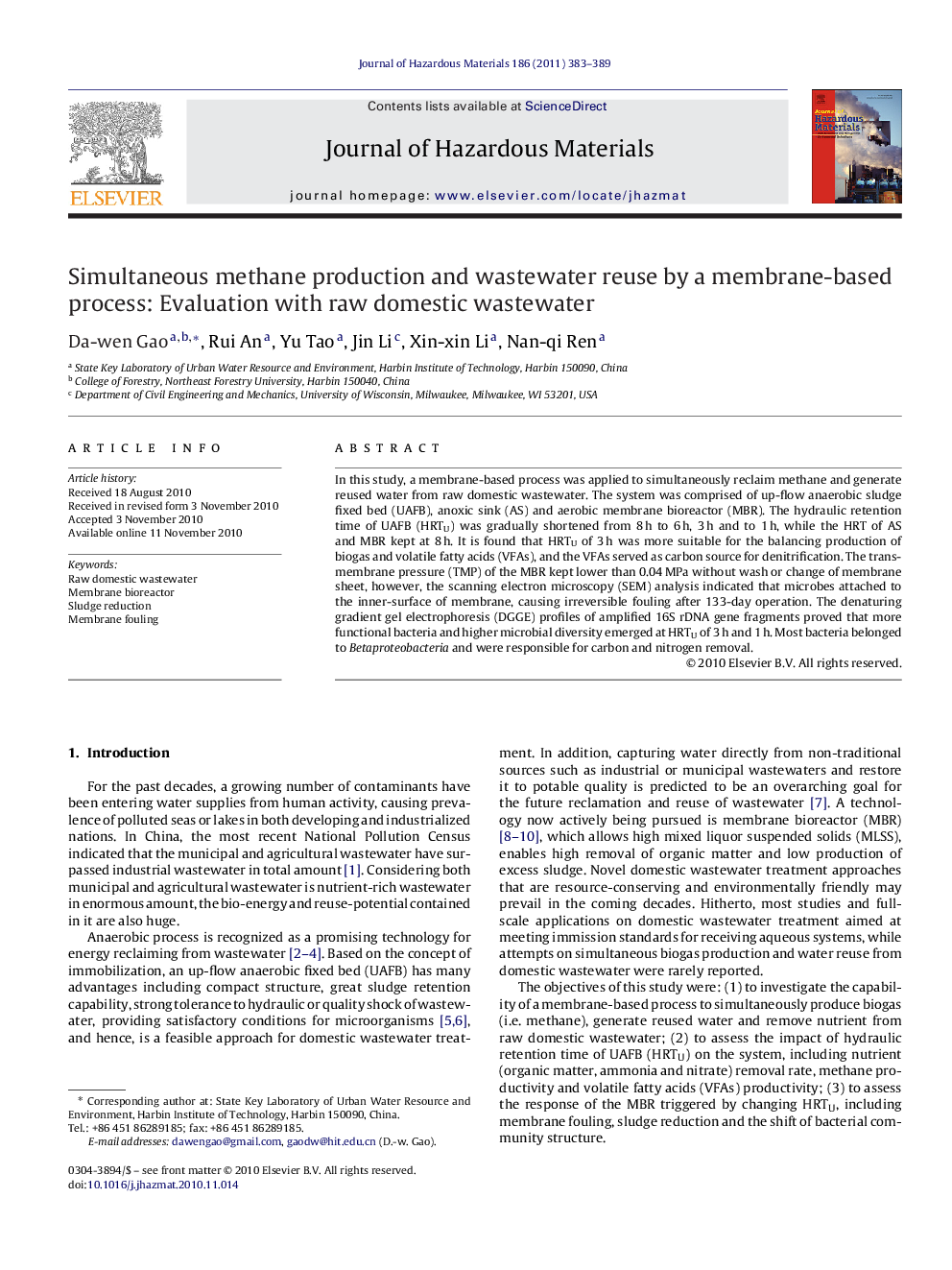| Article ID | Journal | Published Year | Pages | File Type |
|---|---|---|---|---|
| 10372739 | Journal of Hazardous Materials | 2011 | 7 Pages |
Abstract
In this study, a membrane-based process was applied to simultaneously reclaim methane and generate reused water from raw domestic wastewater. The system was comprised of up-flow anaerobic sludge fixed bed (UAFB), anoxic sink (AS) and aerobic membrane bioreactor (MBR). The hydraulic retention time of UAFB (HRTU) was gradually shortened from 8Â h to 6Â h, 3Â h and to 1Â h, while the HRT of AS and MBR kept at 8Â h. It is found that HRTU of 3Â h was more suitable for the balancing production of biogas and volatile fatty acids (VFAs), and the VFAs served as carbon source for denitrification. The trans-membrane pressure (TMP) of the MBR kept lower than 0.04Â MPa without wash or change of membrane sheet, however, the scanning electron microscopy (SEM) analysis indicated that microbes attached to the inner-surface of membrane, causing irreversible fouling after 133-day operation. The denaturing gradient gel electrophoresis (DGGE) profiles of amplified 16S rDNA gene fragments proved that more functional bacteria and higher microbial diversity emerged at HRTU of 3Â h and 1Â h. Most bacteria belonged to Betaproteobacteria and were responsible for carbon and nitrogen removal.
Related Topics
Physical Sciences and Engineering
Chemical Engineering
Chemical Health and Safety
Authors
Da-wen Gao, Rui An, Yu Tao, Jin Li, Xin-xin Li, Nan-qi Ren,
